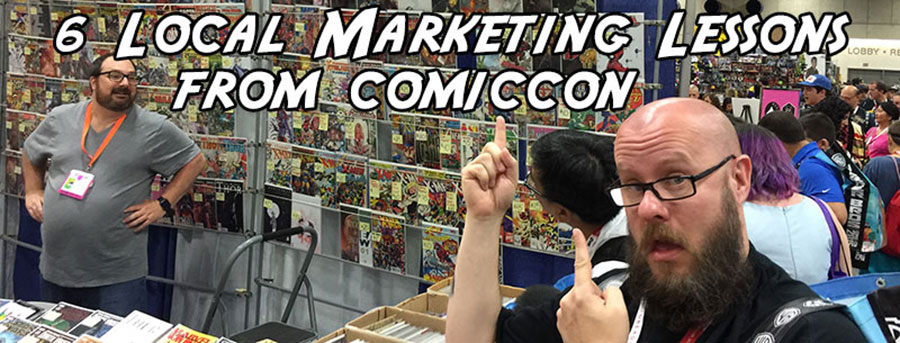
In an effort to further optimize local search results, Google has begun rolling out a new tweak to its algorithm that some in the SEO community have tentatively labeled Pigeon. Dealer’s need to be aware of these changes because the Pigeon update is designed to improve local search listings for businesses (like car dealers).
According to Barry Schwartz at Search Engine Land, Google told them that “the new local search algorithm ties deeper into their web search capabilities, including the hundreds of ranking signals they use in web search along with search features such as Knowledge Graph, spelling correction, synonyms and more”. In addition, Google said that this new algorithm “improves their distance and location ranking parameters.”
It is not clear exactly how all of these changes will impact each dealer, so you should probably Google some of your top traffic-driving organic search keywords, and check the customer experience for anyone searching with local terms like “Toyota dealers near me” or “Ford dealers in Baltimore, MD”.
You should also check your Google Analytics account and compare this last week’s Organic Search Traffic vs. your prior Organic Search traffic levels, so you can determine the impact on your traffic and leads. If you would like any help doing this for your dealership’s Google Analytics account, whether or not you’re a DealerOn customer, just submit your contact information on our site or email me back, and include a comment “Google Analytics Help”.
Many Google users have reported seeing more listings from local directories when making searches – for example, searching for a restaurant name is now more likely to give you results from Yelp, Urbanspoon, OpenTable, and TripAdvisor. This increased focus on aggregate sites may make local search that much more difficult for your dealership website if it carries over into the automotive vertical.

These changes mean it is even more important than ever to ensure your dealership’s business information is the same (and accurate) across the Internet. Google looks for the NAP (name, address, phone number) of local businesses across the Internet, and is more likely to serve up your listing if it is consistent across all sites. Are you using a consistent business name (CDJR vs. Chrysler Dodge Jeep Ram)? Is your dealership using the same address across all local platforms? Your dealership website should be the main source for this type of information, so whatever you are using on your site (name, address, phone number) should be reflected throughout the Internet.
If your dealership is confused about where your business information is listed, consider using a tool like Yext. Yext scans local directories to identify and claim existing listings and reports your standings across hundreds of platforms. From there, you can manage your listings, correcting any errors you may find and help ensure that your dealership’s information is accurate where it matters most.
Need or want some assistance making sure your local directory listings are in order? Please contact me or DealerOn and we can help you through the process. It’s something our team routinely does as a part of our Client Results program, and would be more than happy to help your dealership stay on top of Google’s algorithm adjustments like the Pigeon update.

Many small businesses, including car dealerships, use press releases as a way to add to their search engine optimization. In fact, 3 years ago, DealerOn even recommended dealerships use a press release strategy. However, with Google’s recent algorithm changes, press release sites no longer have the search engine benefits they once did, unless and until they are able to fix some pretty big flaws in their design.
 During Google’s Panda update, the search engine giant used human reviewers to determine the quality of a set of websites. They took that data, plugged it into their patented machine learning technology, and used that to update their algorithm. Google provided these examples of questions their testers were answering about websites:
During Google’s Panda update, the search engine giant used human reviewers to determine the quality of a set of websites. They took that data, plugged it into their patented machine learning technology, and used that to update their algorithm. Google provided these examples of questions their testers were answering about websites:
- Would you trust the information presented in this article?
- Is this article written by an expert or enthusiast who knows the topic well, or is it more shallow in nature?
- Does the site have duplicate, overlapping, or redundant articles on the same or similar topics with slightly different keyword variations?
- Would you be comfortable giving your credit card information to this site?
- Does this article have spelling, stylistic, or factual errors?
- Are the topics driven by genuine interests of readers of the site, or does the site generate content by attempting to guess what might rank well in search engines?
- Does the article provide original content or information, original reporting, original research, or original analysis?
- Does the page provide substantial value when compared to other pages in search results?
- How much quality control is done on content?
- Does the article describe both sides of a story?
- Is the site a recognized authority on its topic?
- Is the content mass-produced by or outsourced to a large number of creators, or spread across a large network of sites, so that individual pages or sites don’t get as much attention or care?
- Was the article edited well, or does it appear sloppy or hastily produced?
- For a health related query, would you trust information from this site?
- Would you recognize this site as an authoritative source when mentioned by name?
- Does this article provide a complete or comprehensive description of the topic?
- Does this article contain insightful analysis or interesting information that is beyond obvious?
- Is this the sort of page you’d want to bookmark, share with a friend, or recommend?
- Does this article have an excessive amount of ads that distract from or interfere with the main content?
- Would you expect to see this article in a printed magazine, encyclopedia or book?
- Are the articles short, unsubstantial, or otherwise lacking in helpful specifics?
- Are the pages produced with great care and attention to detail vs. less attention to detail?
- Would users complain when they see pages from this site?
So how does this impact press release publishing sites? Search Engine Land and Seer Interactive both conducted studies showing major press release sites have seen a major dip in traffic following Panda. Moz.com recently dove into a couple of the biggest issues PR aggregators could be having with the “test” questions above:
Does This Site Contain Insightful Analytics?
Typically, users don’t go to a press release website to find information. Often times, press releases are considered a necessary evil for SEO purposes, so the content isn’t thoughtful or insightful. PR websites may struggle to combat this issue as part of their appeal is lack of editorial edits to content.
Do You Consider This Site an Authority?
Because PR aggregators have a lot of information about a lot of different things, it’s difficult for them to rank high for this question.
Would you Share or Bookmark This Site?
Chances are, unless your press release is exceptionally newsworthy, it’s unlikely to be shared or bookmarked. Consider the amount of non-newsworthy press releases gathered on PR portal sites, and you can see why they may not rank well for this question.
If your dealership or SEO agency continues to use press releases as a part of your SEO strategy, consider adding graphs, charts, and images to help increase the “insightfulness” of your content. Release information when it’s truly newsworthy, and provide information that people may want to share with their friends and colleagues. Also, industry specific press release portals may have less of a chance of being affected by this Panda update, and thus giving your content a better chance of ranking well on Google’s SERP.
Take a look through the questions provided by Google. How would your car dealership website do? Use these as a guideline to providing quality content to search engine users. This is the direction Google is headed.
It’s a pretty common practice for people to Google their own name. Sometimes out of curiosity, but sometimes to help ensure your name (or your dealership’s name) isn’t showing up on webpages you don’t want it to. You Google your dealership name to help ensure it appears where you want it to (and doesn’t where you don’t), but do you Google your dealership website’s original content?

Google is known for punishing websites that have duplicate content on their site, meaning the exact content appears on other websites. But in a recent Matt Cutts video, Google’s head of search spam announced that Google’s position has shifted and the search engine company is now making strides to group websites that have the same content, and showing the best of that group in search results. This helps them not punish sites that are validly quoting or referencing content, while still maintaining a cleaned up search results page. That is why it’s so important to know which websites are using content that you created, especially if your dealership website is not the one of the sites chosen for display.
So how does Google know which website had the content first, which sites are using it after the fact, and whether or not the content is being used properly? No one truly knows how the Google search algorithm is written, but Google has now given us a way to let them know when you find your original content on another website without your dealership’s permission.
Go to the Google Scraper Report, enter the URL of the page on your dealer website which displays the content, the exact URL of the offending site (where your content is being used), and the search result URL that shows your website being outranked by duplicate content. You can find these offending pages by taking portions of the content you or your advertising agency has created for your dealership website and search for it on Google using quotation marks around the phrase or sentence. The search results pages that show should display all sites that have that content on them. Are any of them outranking your dealership website? Use the Google Scraper Report to let the search engine giant know.
This is your best way of alerting Google to duplicate, SPAM filled websites that are using your original content to outrank your dealership website in the search results. It will also help Google improve their search results listings by helping to ensure the original content gets ranked above scraper sites.
The scraper tool doesn’t promise any resolution, but it’s a start. Check to make sure the content your dealership creates isn’t being used to help someone rank above you.
There are thousands of things to manage in each and every dealership, including your dealer website. So much attention is devoted to leads, conversion rate, vehicle detail pages, etc., that sometimes it’s easy to forget one of the most basic SEO factors for your website – the speed at which it loads.

According to KISSmetrics, 47% of consumers expect a web page to load in 2 seconds or less, and 40% of people will leave a website that takes more than 3 seconds to load. When you factor in the immediacy of information most Americans are used to using their smart phones and other mobile devices, are you serving your dealership’s website to potential buyers fast enough?
Why a Fast-Loading Dealership Website is Important:
Google – Google made it clear years ago that they use site speed as a ranking factor – it appears that their algorithm is designed to penalize websites that are slow to load. This gives your fast loading site a leg up on your competition in search engine results.
Visitors – A quick loading website can help reduce bounce rates and increase conversion rates. The faster your visitors are able to access the content they are looking for, the less likely they are to go to another dealership website. You’ve probably designed your dealership’s website to help visitors find the vehicle they’re interested in as quickly as possible, so make sure you aren’t slowing them up with a slow load time.
How to Tell:
There are a number of free tools online that will test how long it takes your website to load, and most offer suggestions to increase the speed. Just enter the URL you’d like to test. I’ve listed a few below, but you can search online for “site speed test” to find more.
Page Speed Insights (from Google)
Another, simple way to test how quickly your car dealership website is loading is to do it yourself! Use different devices (for mobile, test on both wi-fi and the mobile network) to time how quickly your website loads. Remember that Google factors in page speed for each type of device (desktop, tablet and phone), so make sure you test the top pages on your site for each device type.
What You Can Do:
Minimize the types of files that auto-load when your site is launched – things like videos, music, or animations can slow down the initial load time. When possible, simplify the design of your website. Talk to your website provider about how their websites are structured and coded, and what they can do to help you achieve your site speed goals.


